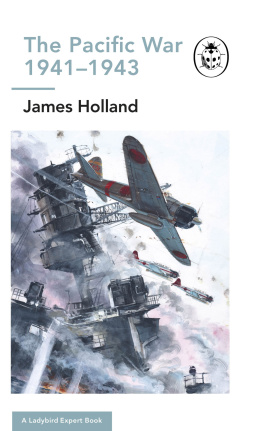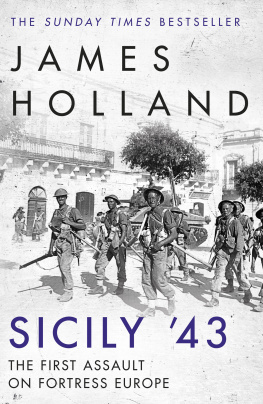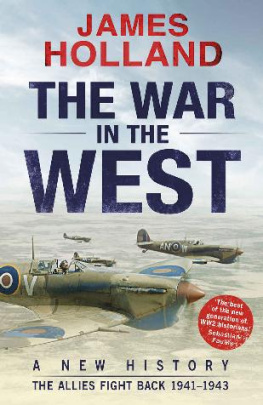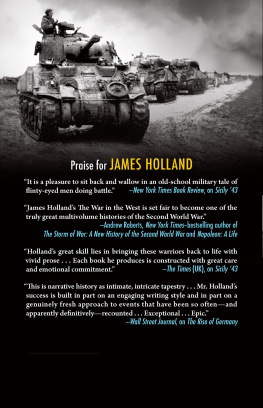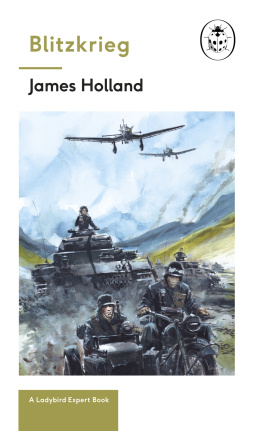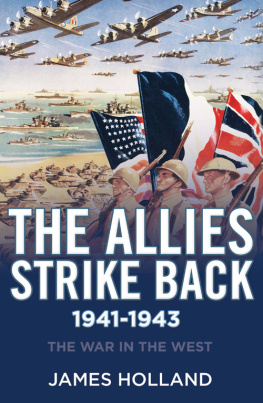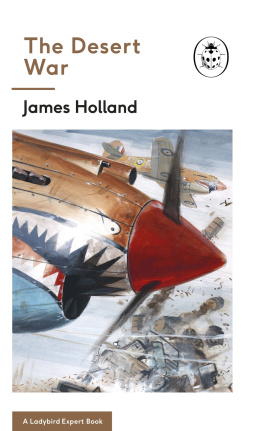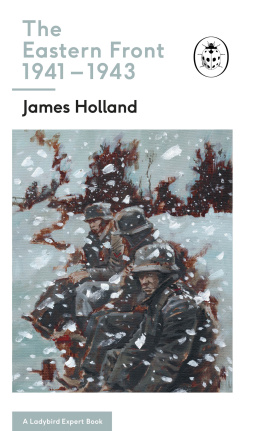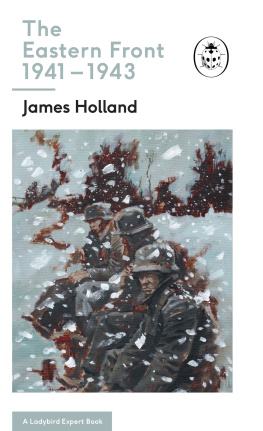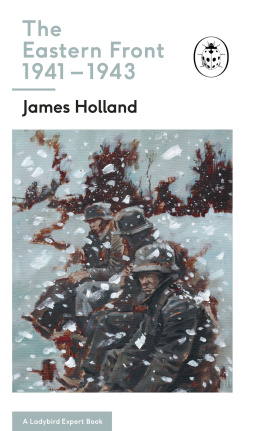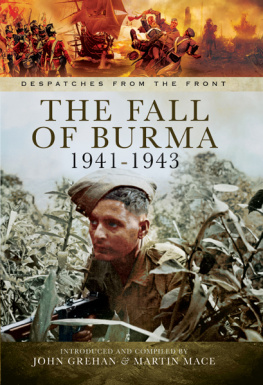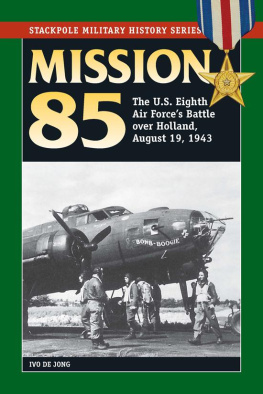James Holland - The Pacific War 1941-1943
Here you can read online James Holland - The Pacific War 1941-1943 full text of the book (entire story) in english for free. Download pdf and epub, get meaning, cover and reviews about this ebook. year: 2019, publisher: Penguin Books Ltd, genre: History. Description of the work, (preface) as well as reviews are available. Best literature library LitArk.com created for fans of good reading and offers a wide selection of genres:
Romance novel
Science fiction
Adventure
Detective
Science
History
Home and family
Prose
Art
Politics
Computer
Non-fiction
Religion
Business
Children
Humor
Choose a favorite category and find really read worthwhile books. Enjoy immersion in the world of imagination, feel the emotions of the characters or learn something new for yourself, make an fascinating discovery.
- Book:The Pacific War 1941-1943
- Author:
- Publisher:Penguin Books Ltd
- Genre:
- Year:2019
- Rating:5 / 5
- Favourites:Add to favourites
- Your mark:
- 100
- 1
- 2
- 3
- 4
- 5
The Pacific War 1941-1943: summary, description and annotation
We offer to read an annotation, description, summary or preface (depends on what the author of the book "The Pacific War 1941-1943" wrote himself). If you haven't found the necessary information about the book — write in the comments, we will try to find it.
The Pacific War 1941-1943 — read online for free the complete book (whole text) full work
Below is the text of the book, divided by pages. System saving the place of the last page read, allows you to conveniently read the book "The Pacific War 1941-1943" online for free, without having to search again every time where you left off. Put a bookmark, and you can go to the page where you finished reading at any time.
Font size:
Interval:
Bookmark:

Keith Burns
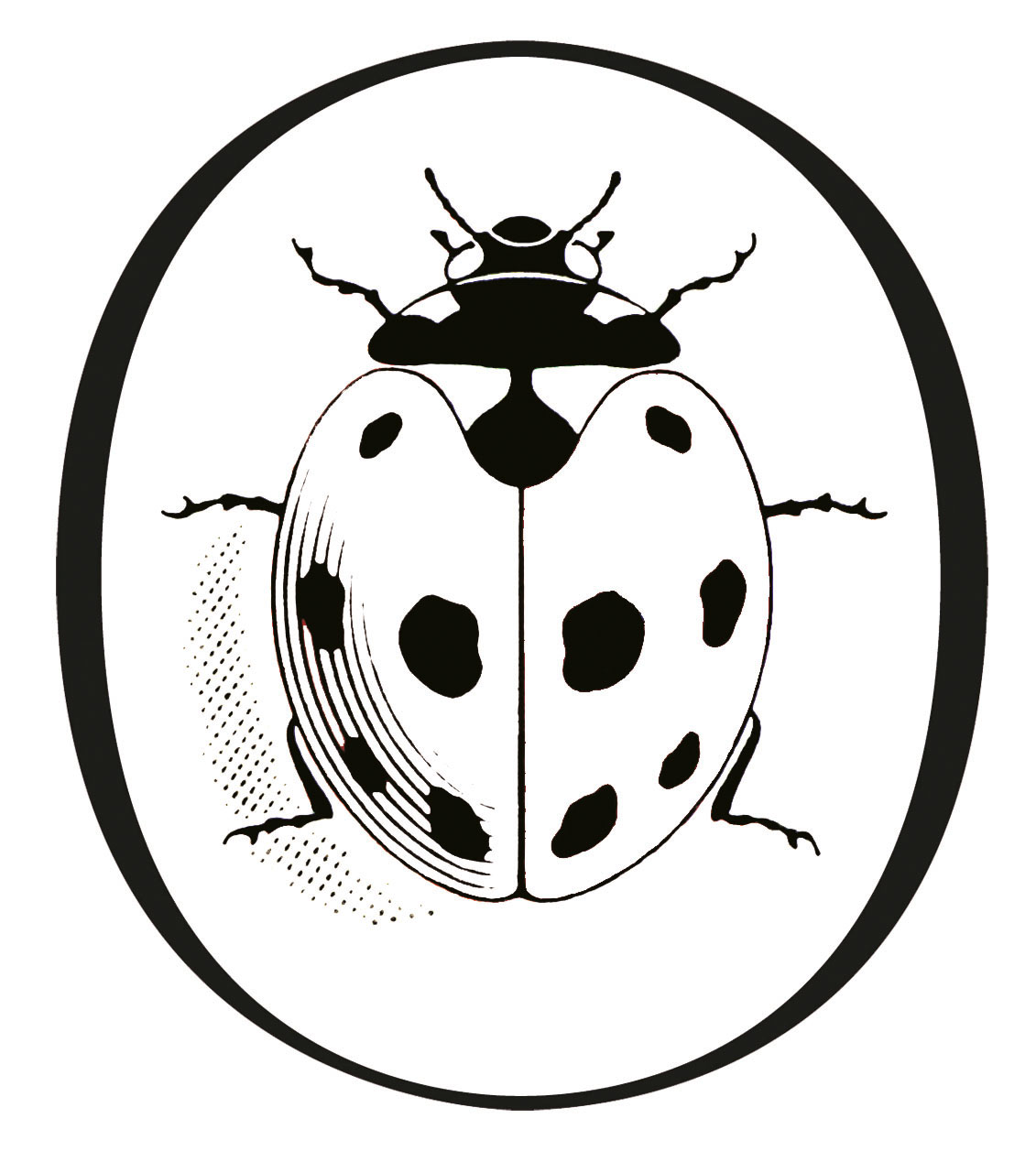
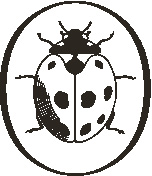
This is a Ladybird Expert book, one of a series of titles for an adult readership. Written by some of the leading lights and outstanding communicators in their fields and published by one of the most trusted and well-loved names in books, the Ladybird Expert series provides clear, accessible and authoritative introductions, informed by expert opinion, to key subjects drawn from science, history and culture.
The Publisher would like to thank the following for the illustrative references for this book: : Admiral William F. Halsey Jr Bettman/ Bettman/Getty Images.
Every effort has been made to ensure images are correctly attributed, however if any omission or error has been made please notify the Publisher for correction in future editions.
MICHAEL JOSEPH
UK | USA | Canada | Ireland | Australia
India | New Zealand | South Africa
Michael Joseph is part of the Penguin Random House group of companies whose addresses can be found at global.penguinrandomhouse.com.

First published 2019
Text copyright James Holland, 2019
All images copyright Ladybird Books Ltd, 2019
The moral right of the author has been asserted
Illustration by Keith Burns
ISBN: 978-1-405-92984-4
This ebook is copyright material and must not be copied, reproduced, transferred, distributed, leased, licensed or publicly performed or used in any way except as specifically permitted in writing by the publishers, as allowed under the terms and conditions under which it was purchased or as strictly permitted by applicable copyright law. Any unauthorized distribution or use of this text may be a direct infringement of the authors and publishers rights and those responsible may be liable in law accordingly.
Early on Sunday morning, 7 December 1941, the inhabitants of the Hawaiian island of Oahu awoke to the sound of aircraft engines, guns and bombs exploding. Many thought it was another live firing exercise, but at 8.40 a.m. the local radio interrupted its programme. Please pay attention, said the announcer. The island is under attack. I repeat, the island is under attack by hostile forces.
In fact, the Japanese had first attacked fifty-two minutes earlier, when 353 aircraft swooped in low over the sea. Torpedo bombers had caught the United States Pacific Fleet at Pearl Harbor completely by surprise, and within minutes all eight battleships moored there had been hit. Meanwhile, dive-bombers screamed down over the islands air bases. A further 171 aircraft in the second wave roared in to attack a short while later, so that by the time the radio announcer told Hawaiians what was happening, the cream of the Pacific Fleet lay crippled: California had been half-sunk, West Virginia was ablaze and four other battleships were immobile and out of action. Worse, Oklahoma had capsized, while Arizonas forward magazine had exploded, killing more than a thousand of her crew. Where once there had been Battleship Row there was now a mass of twisted metal, angry flames and billowing thick smoke. And a lot of dead American servicemen. On the airfields, 188 aircraft had been destroyed and a further 159 damaged. Also hit were three cruisers, three destroyers and three other vessels.
Witnesses were stunned by how low the Japanese pilots flew. Hell, I could even see the gold in their teeth, observed one American army officer. It was like being engulfed in a great flood, a tornado or earthquake, said another. The thing hit so quickly and so powerfully it left you stunned and amazed.
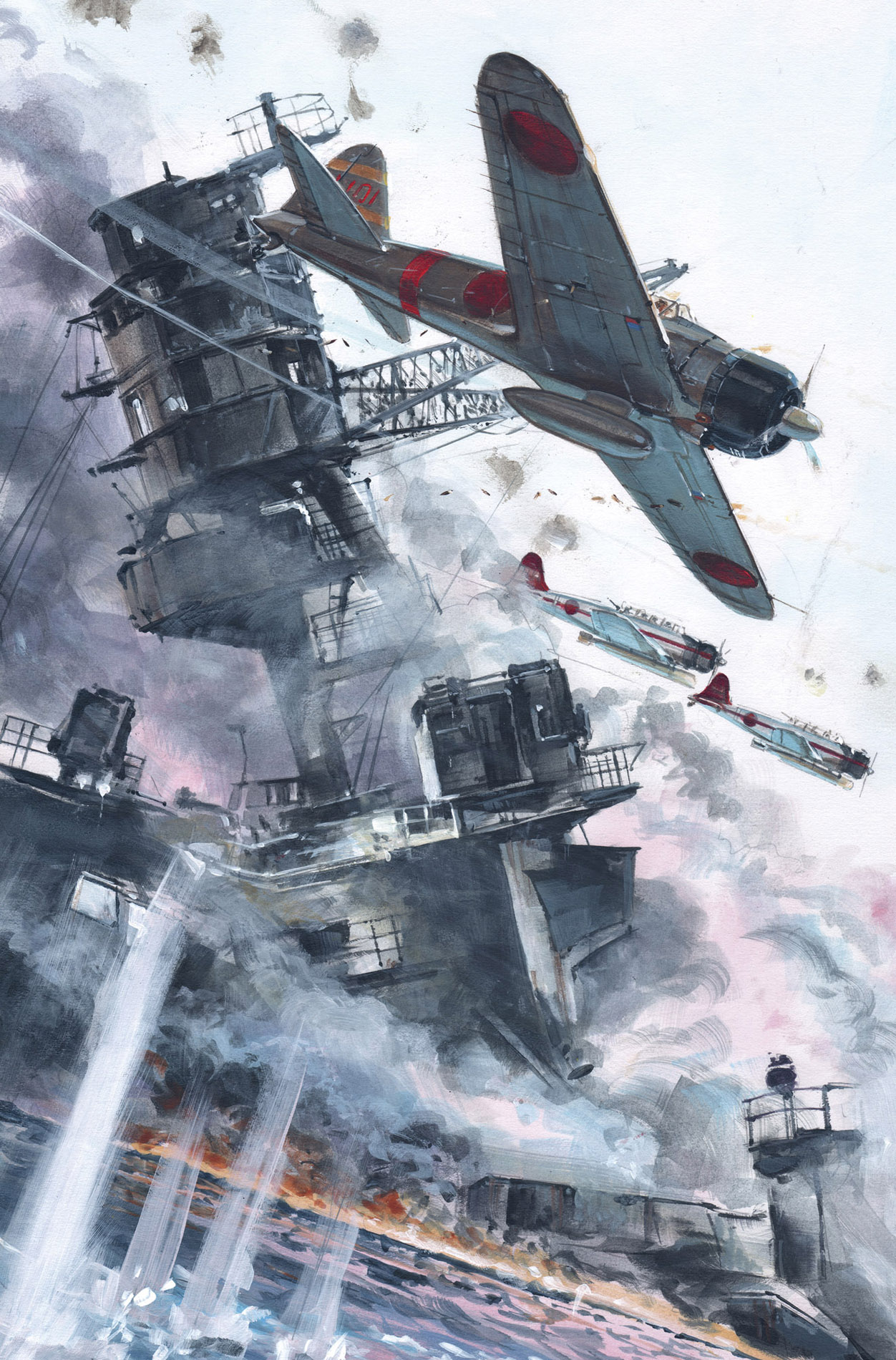 The Japanese attack Pearl Harbor, Sunday, 7 December 1941.
The Japanese attack Pearl Harbor, Sunday, 7 December 1941. The devastating attack proved how badly the Americans had underestimated the Japanese. There had been, however, plenty of indications that Japan was heading towards war, although little that suggested the US Pacific Fleet at Pearl Harbor was the target.
Japans growing aggression towards the West had been a long time in coming and at its core was the urgent need for resources. The origins for this change in Japanese ambition lay in the Meiji Revolution of 1868, in which the rule of the emperor was restored and the old feudal shogunate thrown aside. It was clear, though, that the country lagged industrially and commercially behind Britain, the United States, France and other global powers. In the decades that followed, Japan modernized very quickly, with a massive growth in industry and infrastructure. Shipyards were built, so too was a national railway, and the largely rural population began to migrate rapidly to the cities.
The trouble was, Japan was fairly resource-poor and her burgeoning urban population and growing middle class needed the food and comforts of a modern, industrialized nation. Britain, similar in size to Japan, had a large global trading empire and overseas possessions. Now Japan began developing ambitions to have an empire of her own.
An obvious source of resources was China. Japan invaded Manchuria in north-east China in 1931, but while there were numerous engagements and sporadic fighting in the years that followed it was not until 1937 that Japan and China became embroiled in full-scale war.
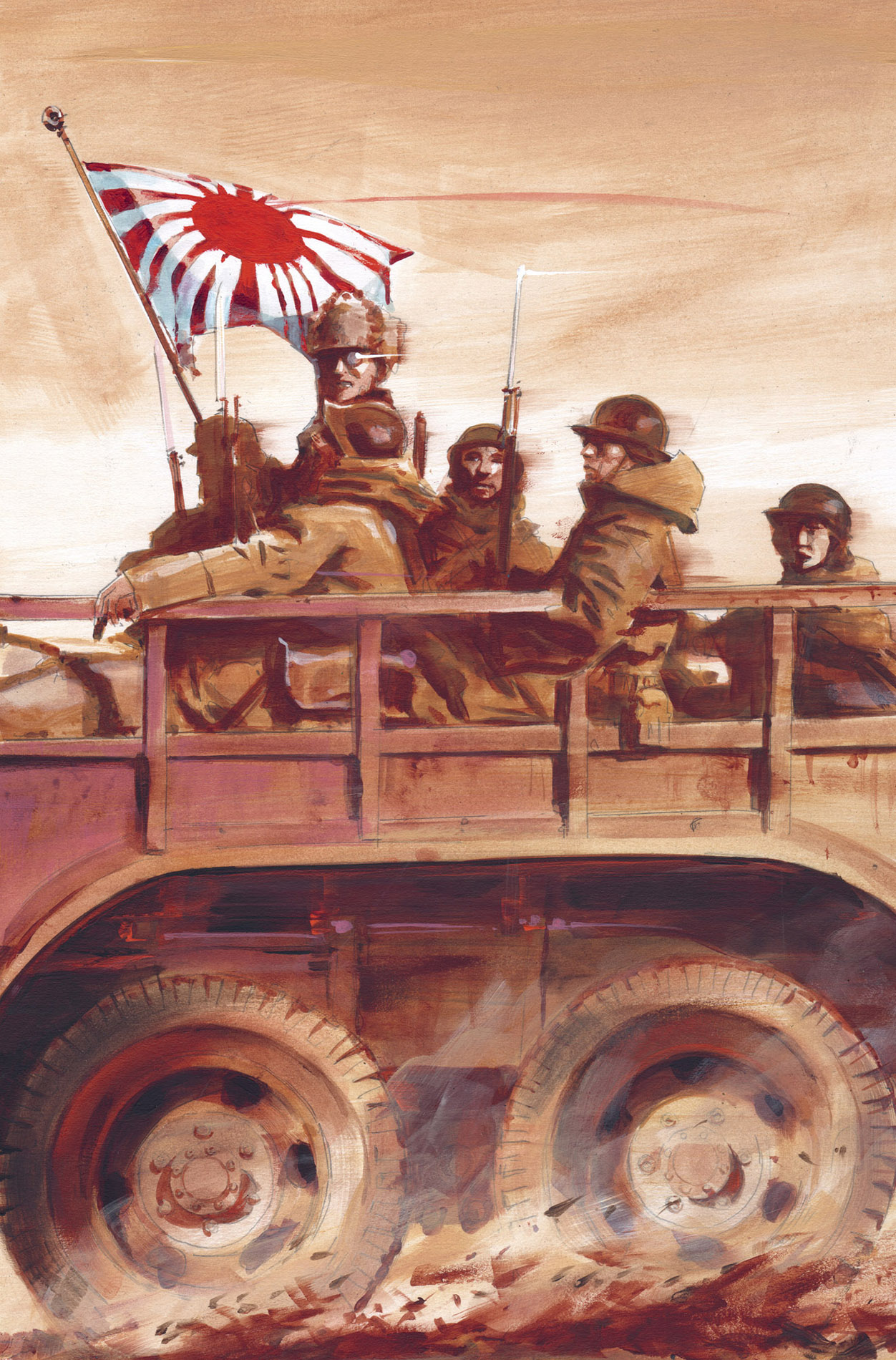 Japanese troops during the invasion of China.
Japanese troops during the invasion of China. Sweeping Japanese victories ensued, along with merciless brutality towards many hundreds of thousands of Chinese civilians. Yet the invaders were unable to complete their victory. The Chinese, under the military rule of General Chiang Kai-shek, offered more resistance than Japan had anticipated.
In fact, the continuing war meant Japans situation was not improving but worsening, despite her gains. In the summer of 1939 there was a drought and a critical shortage of water, as well as of coal, which led to restrictions in electricity. The drought also led to a drastically reduced production of rice and to food shortages. By early 1940 the Japanese trade treaty with the USA had lapsed with no hope of renewal. Fear that imports, especially those from the US, would be cut off led to the urgent purchasing of overseas war materiel, which in turn meant foreign-exchange reserves were being allowed to run low.
By the autumn of 1941, Japan held most of the eastern coastal area of China and Indochina (Vietnam), but at great cost and with ongoing resistance and guerrilla fighting with which to contend. Militarily, Japan was reasonably well equipped with soldiers, aircraft and a large, powerful and modern navy, but was dependent on the United States, especially, for steel, oil and other essential raw materials. Once the American source was cut off, her ability to build on her gains would be limited unless she could successfully tap the resources of the Far East, the best of which lay in the hands of the British, the Americans and the Dutch.
Next pageFont size:
Interval:
Bookmark:
Similar books «The Pacific War 1941-1943»
Look at similar books to The Pacific War 1941-1943. We have selected literature similar in name and meaning in the hope of providing readers with more options to find new, interesting, not yet read works.
Discussion, reviews of the book The Pacific War 1941-1943 and just readers' own opinions. Leave your comments, write what you think about the work, its meaning or the main characters. Specify what exactly you liked and what you didn't like, and why you think so.

